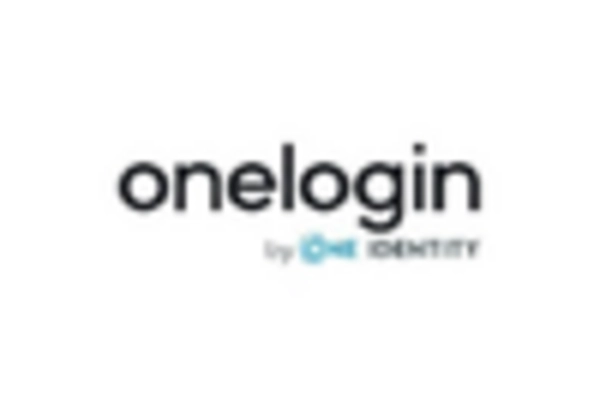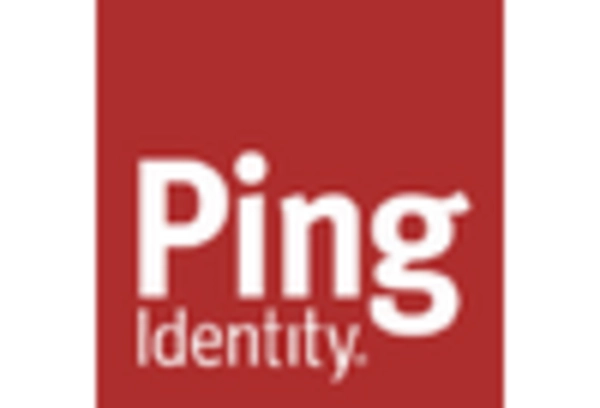Rising Cybersecurity Concerns
In the context of the Single Sign-on Market, rising cybersecurity concerns play a pivotal role in driving adoption. Organizations are increasingly aware of the vulnerabilities associated with password management, leading to a heightened focus on security measures. SSO solutions mitigate risks by reducing the number of passwords users must remember, thereby decreasing the chances of password-related breaches. Recent statistics indicate that over 80% of data breaches involve compromised passwords, underscoring the urgency for robust authentication methods. As a result, businesses are turning to SSO as a strategic approach to enhance their security posture while simplifying user access. This trend is likely to continue as organizations seek to protect sensitive information and comply with stringent regulatory requirements.
Regulatory Compliance Requirements
Regulatory compliance requirements are increasingly influencing the Single Sign-on Market. Organizations are compelled to adhere to various data protection regulations, such as GDPR and HIPAA, which necessitate stringent access controls and user authentication measures. SSO solutions facilitate compliance by providing centralized access management, enabling organizations to enforce security policies effectively. This is particularly crucial in industries such as finance and healthcare, where non-compliance can result in severe penalties. As businesses navigate the complexities of regulatory landscapes, the adoption of SSO solutions is likely to rise, as they offer a streamlined approach to managing user access while ensuring compliance with legal obligations. This trend underscores the importance of integrating security measures into organizational practices.
Growing Demand for User Convenience
The Single Sign-on Market experiences a notable surge in demand for user convenience. As organizations increasingly prioritize user experience, the implementation of Single Sign-on (SSO) solutions simplifies access to multiple applications with a single set of credentials. This trend is particularly evident in sectors such as finance and healthcare, where user satisfaction is paramount. According to recent data, the SSO market is projected to grow at a compound annual growth rate of approximately 12% over the next five years. This growth is driven by the need for seamless user experiences, which enhances productivity and reduces the likelihood of password fatigue. Consequently, organizations are investing in SSO solutions to streamline access management, thereby fostering a more efficient operational environment.
Integration with Mobile Applications
The integration of Single Sign-on solutions with mobile applications is a significant driver within the Single Sign-on Market. As mobile usage continues to rise, organizations are recognizing the necessity of providing seamless access to applications on various devices. SSO enables users to authenticate once and gain access to multiple mobile applications, enhancing user experience and engagement. This trend is particularly relevant in sectors such as retail and e-commerce, where mobile transactions are becoming increasingly prevalent. Data suggests that mobile commerce is expected to account for over 50% of total e-commerce sales in the coming years. Consequently, the demand for SSO solutions that cater to mobile applications is likely to grow, as businesses strive to meet consumer expectations for convenience and security.
Increased Focus on Remote Work Solutions
The shift towards remote work has significantly impacted the Single Sign-on Market. As organizations adapt to flexible work arrangements, the need for secure and efficient access to applications from various locations has become paramount. SSO solutions provide a viable answer to this challenge by allowing employees to access multiple applications with a single login, regardless of their physical location. This trend is particularly pronounced in sectors such as technology and education, where remote collaboration is essential. Data indicates that remote work is expected to remain a prevalent model, with a substantial percentage of the workforce continuing to work remotely in the foreseeable future. Consequently, the demand for SSO solutions that support remote work is likely to grow, as organizations seek to maintain productivity and security in a distributed work environment.


















Leave a Comment